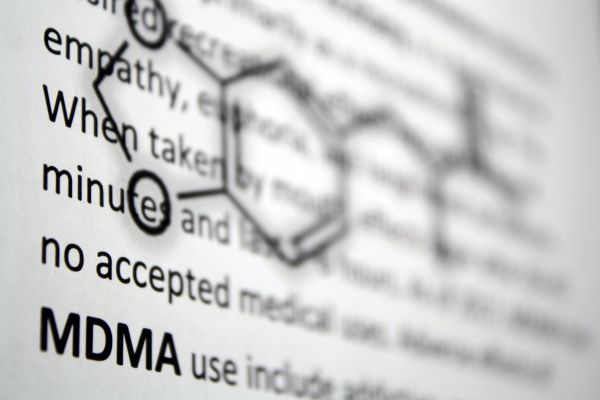Ecstasy, also known as MDMA, Molly, or “E”, is one of the most popular recreational drugs in America, commonly used among partygoers and young adults. Side effects include energy and alertness, pleasurable feelings, and sociability.
While its euphoria-inducing effects may seem enticing, ecstasy is far from a harmless party drug. It poses significant dangers to both physical and mental health and even just a single use can forever warp the functioning of our brain.
5 Effects of Ecstacy/MDMA on the Brain
When a person takes ecstasy, it is rapidly absorbed into the bloodstream by the digestive system and then distributed throughout the body, eventually reaching the brain. Once in the brain, ecstasy primarily affects three key neurotransmitters: serotonin, dopamine, and norepinephrine. Responsible for a range of crucial bodily functions, the resulting imbalances in these neurotransmitters can trigger a host of issues, some of which can be long-standing in the face of repeated use.
- Increased sensory sensitivity
Ecstasy increases the release of serotonin, dopamine, and norepinephrine into the synaptic cleft, leading to increased signaling between neurons. Neurons are the receptors in the brain that help us to process everything we interact with like sights and smells, as well as our perception of intangible things like time.
Heightened sensory sensitivity can make users more susceptible to overstimulation and can lead to sensory overload, anxiety, and panic attacks. It can also potentially lead to cell damage or death.
- Depletes serotonin levels
Ecstasy has a high potential for neurotoxicity due to the nature of how it works. The reason why ecstasy might feel so enjoyable in the moment is because it causes a tremendous surge in serotonin — one of the key feel-good neurotransmitters. This high comes at a cost, however, and the brain finds itself depleted of serotonin afterward. In this “comedown” phase, ecstasy users may feel depression, fatigue, and irritability in the days following use
- Impaired cognitive function
Using ecstasy can hurt cognitive function both during and after its use, particularly memory and attention. This is primarily due to ecstasy’s impact on serotonin, which has a direct relationship with memory. Simple tasks like driving or operating machinery after using ecstasy can be extremely risky.
- Mood disturbances
Repeated ecstasy use can cause longer-term neurochemical imbalances. After experiencing such intense highs and lows, the brain no longer knows what “normal” levels should be. As a result, ecstasy can cause mood disorders such as depression and anxiety, in addition to other long-term changes to brain function.
- Sends signals to stimulate the body
Unlike serotonin or dopamine which can make a person feel good, the other key neurotransmitter targeted by ecstasy is norepinephrine. Norepinephrine is a counterpart of adrenaline that helps prepare the body’s fight-or-flight response. Ecstasy signals this hormone to be released, which leads to many of ecstasy’s physically stimulating effects such as increased heart rate, blood pressure, and alertness. This can be dangerous with increases in heart rate and blood pressure potentially leading to heart complications, heat stroke, and even death.
Are ecstasy’s effects on the brain permanent?
Science isn’t sure if brain damage caused by ecstasy is permanent. Research into methamphetamine, another stimulant, has been shown to have some permanent effects, but there have been no such findings for ecstasy in particular. One study looked into individuals who stopped using ecstasy for 20 weeks and found indications that their brain was recovering.
How does ecstasy cause the high?
One of the main effects of ecstasy in the body is that it causes a massive release of serotonin. This important neurotransmitter deals with mood regulation, pleasure, and feelings of well-being. As a result, this temporary surge will make a person feel a rush of positive emotions, empathy, and increased sociability. These effects typically last between 3 and 6 hours. The comedown period, however, can take several days.
How addictive is ecstasy?
Ecstasy is a stimulant drug, like that of cocaine and meth. It’s not nearly as addictive as either substance but can still get someone hooked quickly. Some of the most common signs of ecstasy addiction or withdrawal are:
- Anxiety or depression
- Difficulty concentrating
- Fatigue
- Headache
- Loss of appetite
- Nausea
- Teeth clenching
There are no FDA-approved medications for treating ecstasy addiction. Instead, treatment typically includes detox and a focus on behavioral therapies like cognitive-behavioral therapy (CBT). If you or someone you know has been dabbling with ecstasy, get free help near you at local Narcotics Anonymous meetings. There you can learn more about treatment options that have worked for others and get judgment-free support.
